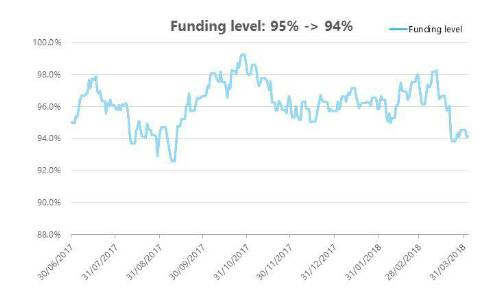By Martin Hooper, Associate, FIA, Barnett Waddingham
Returns from most asset classes have been fairly modest and most schemes are likely to see a small increase in liabilities overall. The net effect will be specific to each scheme, but in general we might expect a small increase in deficits before contributions are taken into account.
If markets remain stable for the next couple of months, this is the position we might expect at the end of June 2018:

Volatility in equity market valuations means there is still potential for significant variations in the position in the run up to 30 June 2018. While downward pressure on bond yields eased slightly in early 2018, it certainly possible for this to be reversed. A small change in either could cause a material change in the pension balance sheet figure.
Despite the recent movements, most of the past decade has been an incredibly durable equity bull run, pushing up equity valuations across developed markets. The cyclically adjusted price-earnings ratio (CAPE) of the US stock market is at a level not seen since the dotcom bubble or the 1929 crash, at around 34. Historically, when the CAPE has exceeded 28 the returns achieved over the next decade have averaged approximately zero.
Current bond yields, which feed into low discount rates (and high liability values), have caused many companies to revisit how they set their discount rate and other assumptions, resulting in lower balance sheet deficits. For example, Tesco shaved approximately £3bn from its pension liability value in 2017 by reviewing assumptions.
Whilst the trustees have effective control of the investment strategy, the sponsoring employer retains all the risk. You should understand the risk being run, and how you can influence the investment strategy to reduce that risk.
Reducing risk does not necessarily mean selling growth assets. In fact, most schemes need growth assets, and the associated returns, to ultimately pay all of the promised benefits. Reducing risk means increasing the certainty that the money currently set aside, along with committed contributions, is enough to pay the benefits. Taking this approach should reduce, and eventually remove, the pensions burden from sponsors.
|


